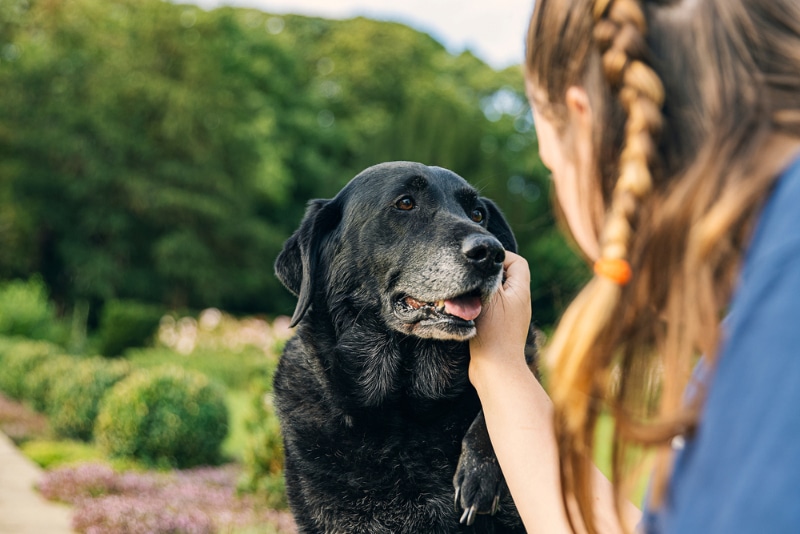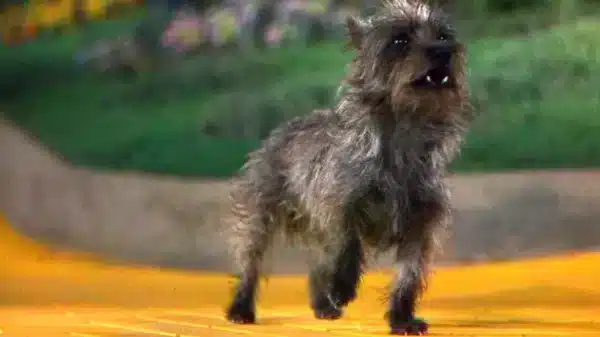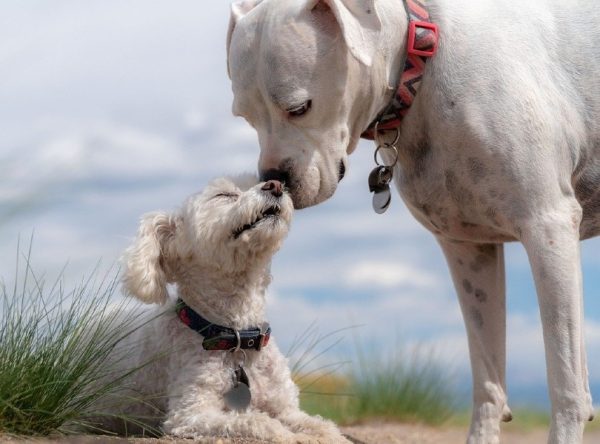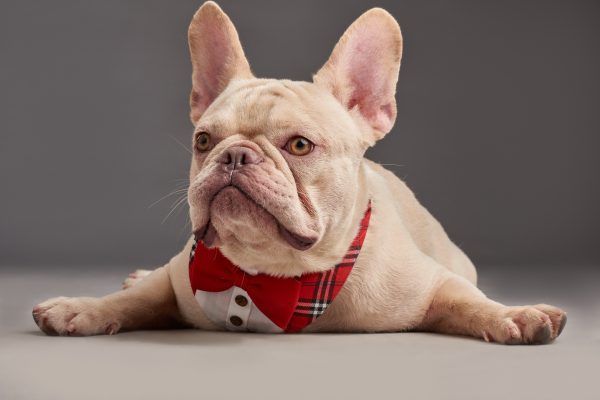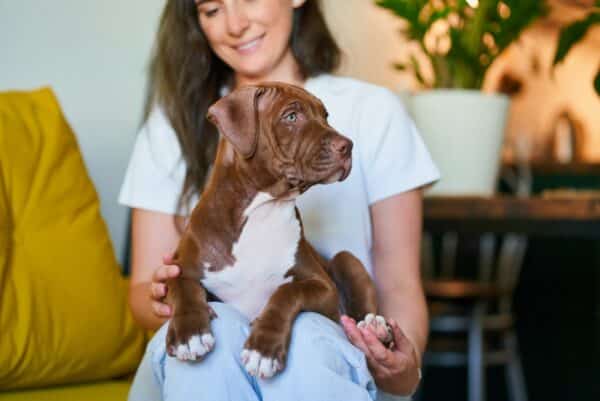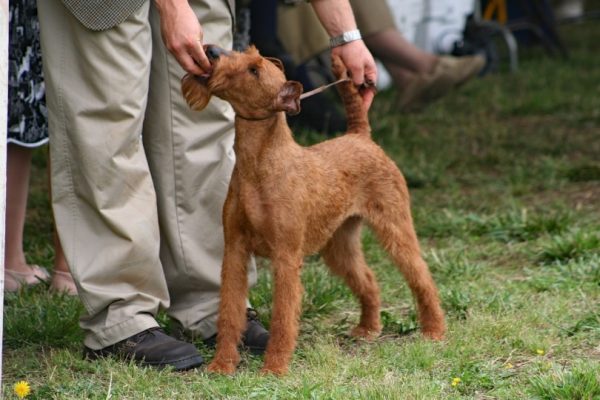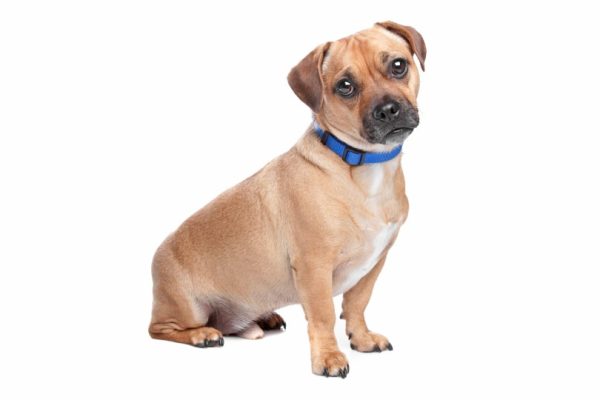In this article
It’s an age-old question of whether or not you can teach an old dog new tricks, and many people believe that it’s impossible, or at least quite challenging. While they might believe the window for learning closes after a certain age, science has a different spin on this adage that may surprise you. You actually can teach your aging pup different commands and tricks, and the training principles you followed when your pet was a puppy still apply.
Let’s begin by considering the canine hardware that makes training senior dogs possible.

The Canine Brain and Intelligence
We know that dogs are intelligent and capable of learning many things. Interestingly, selective breeding them for jobs like herding and guarding has increased their brain size compared to early domesticated dogs or ancient dog breeds. Our pets have to do more things, which means an increase in the neural networks, making it possible. It’s also evident across breed lines based partly on the animal’s size and job.
For example, a 7.6-pound Chihuahua has a brain weighing about 55.1 grams or 1.94 ounces, or roughly 1.6% of their body weight. On the other hand, a 76-pound German Shepherd’s brain is approximately 3% of their body weight. That’s significant, given that the average human brain is about 2% of their body weight. Research has shown a correlation between size and greater executive function in dogs.
Remember that being a wild canid also requires many decisions that necessitate skills like self-control and working memory. Our pets have these capabilities from the ancestry they share with wolves. Dogs may have diverged from them around 27,000 years ago. Nevertheless, the evolutionary pressure to lose these skills hasn’t been significant. That explains why some pups still have a strong prey drive, for example. An interesting fact is that dogs have consistently smaller relative brain sizes than wolves since domesticated life is less challenging; however, modern breeds more distantly related to wolves have relatively larger brains than ancient breeds more closely related to wolves.1 Mentally challenging your dog through learning and training is good for them!
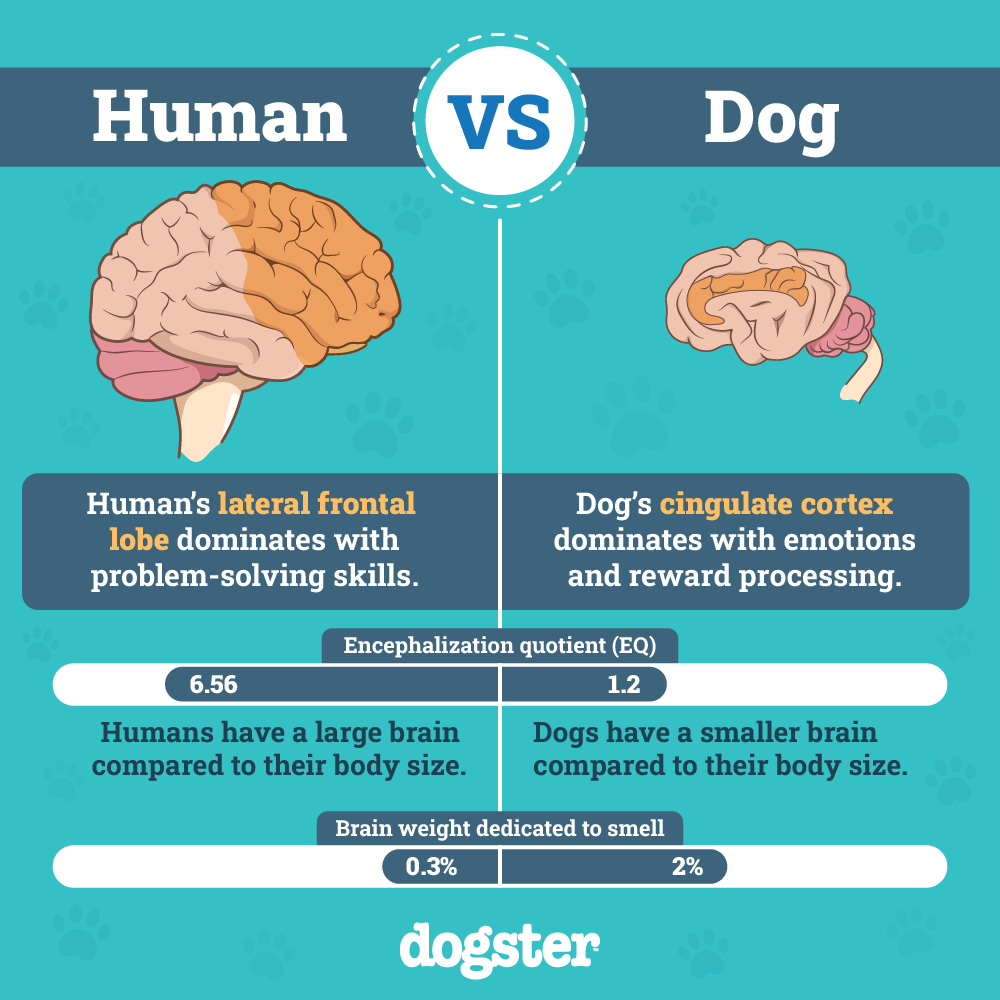
Dogs’ Unique Capabilities for Learning
Dogs are carnivores, although domestication and selective breeding have changed their DNA and physiology to push them closer to omnivores. However, our pets still have a keen sense of smell, visual acuity, and fast running speeds to be hunters. Senior pups may slow down as they age, but they can respond to stimuli in their environment, including novel experiences and new tricks.
Learning new skills involves changes in the animal’s neural pathways. The ability of the brain to change is called neuroplasticity. Research has shown human brains can reorganize in response to new memories, experiences, and learning. Dogs have neural stem cells, making new neural pathways from learning possible, too.2
The Changing Brain
Canine brains, like humans, aren’t static even as they age. The mechanism requiring sensory activity to influence changes still exists so that the organ can optimize its resources and effectiveness, which may include performing new behaviors based on what the dog is being taught. The differences between a young and old pup vary depending on the neural structures involved.
One study examined these variations. The researchers discovered that young dogs had a significant capacity for neurogenesis or nerve cell production during the juvenile period of development. That ability waned in adults except for the olfactory bulb and hippocampus. The latter structure is integral to memory formation, such as a pup would tap into to learn new tricks.
The axons or branches that connect nerve cells are plentiful in adult animals. While fewer than juvenile animals, the synapses or regions of nerve impulse transmissions are abundant and, thus, have the ability for stability of connections and the formation of new ones. It makes evolutionary sense for a dog to be able to respond to environmental stimuli even later in life. That’s why enrichment is essential for pets!
That said, in seniors, whether dogs or humans, cognitive decline is common and is believed to be caused by oxidative damage, the progressive accumulation of toxic proteins, cerebrovascular pathology, and changes in gene expression. And just like in humans, it affects some individuals more than others. Some senior dogs will remain normal, while others can develop cognitive dysfunction.
Cognitive dysfunction in the aging brain seems to result from neuron loss combined with a reduced ability to replace those neurons through neurogenesis. But just like the muscles of a senior who has exercised throughout their life remain more functional than those who had sedentary habits, stimuli help maintain function. Enrichment compels an animal to pay attention, which is at the crux of learning. Senior dogs benefit from this mental stimulation through the process involving new tricks and skills. The key is providing challenges that require the dog to pay attention, which in turn can help them maintain a healthy and functional brain.
The other takeaway on the neural front is you must make it worthwhile for the animal if you want your senior pet to retain the memory of the trick. A favorite treat will get any food-motivated pup to do something at least once!
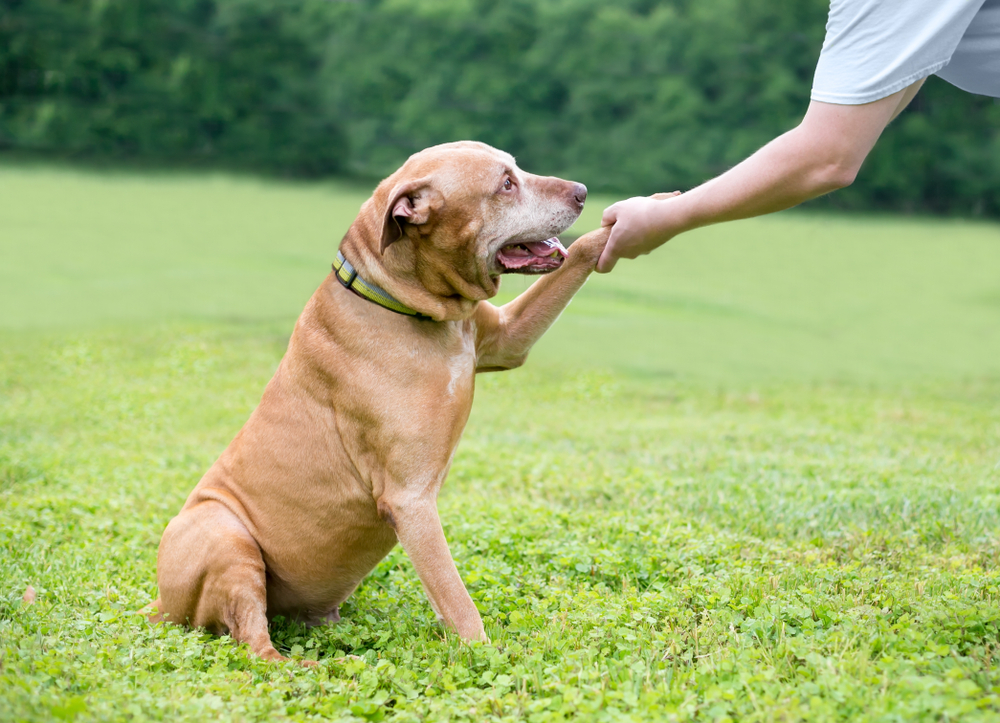
The Effect of Selective Breeding on Canine Brain Development
Another factor influencing learning rests with selective breeding. Humans have used dogs in functional roles like hunting companions for hundreds of years. It’s only been in the last roughly 180 years that people have selectively bred canines for certain tasks, which has, in turn, affected their brain development, which can play a role in senior dogs learning specific tricks.
One study looked at the jobs dogs performed and the resulting structural differences in their brains that can also influence behavior. The scientists identified the following six networks:
- Vision and olfaction
- Anxiety, fear, and stress
- Social interactions
- Motion, eye movements, and spatial navigation
- Taste and olfaction
- Drive and reward
Breed differences could identify which senior pets may be more capable of learning certain kinds of novel tricks. For example, Border Collies, English Pointers, and Doberman Pinschers scored high in drive and reward, which is fitting for the jobs these breeds have traditionally had. The Basset Hound, a hunting companion, got high marks in vision and olfaction.
These data tell us that dogs bred for a specific purpose show evidence of neuroplasticity affecting brain regions that would help them excel at their jobs. This information can provide additional guidance for training these pups. Companion animals show significant network development in brain areas associated with social interactions. So, praise and treats can make teaching these pets easier.

Tips for Training Your Senior Dog
- The research supports the hypothesis that you can teach old dogs new tricks. Unless they are already suffering cognitive decline, they are capable of it physically. In fact, learning can help to keep their brains functioning, and your job as the trainer is to make the lessons compelling enough to get your pup’s attention. That will challenge them mentally, which can help create strong neural pathways. You must also repeat the lessons to cement the cause-and-effect association even further.
- Positive reinforcement is the best approach because it focuses on the desired result. Your dog does what you want and is rewarded with treats and praise. The latter is effective because of the relationship you have cultivated with your pet. They have learned from experience what your reaction means. That can make the correct response a more potent motivator.
- We suggest doing short lessons to encourage gradual learning through successive approximations. Remember that senior pets are often less active. Health issues like arthritis can also affect their attention and performance. So, monitor how your pooch responds and adjust your game plan accordingly. Be prepared for your senior dog requiring more repetitions of the same lesson. Be patient and compassionate and always make sure you set them up for success!

Final Thoughts
Neuroscience has come a long way in the last few decades. Once accepted truths, like that you can’t teach an old dog new tricks, are falling to the wayside as research sheds new light on the brain and nervous system. We’ve only scratched the surface of what we and our canine companions are capable of doing. Neuroplasticity shows us the brain’s adaptability and flexibility, and learning new tricks is only one example.
While it is undeniable that cognitive dysfunction is a result of neural loss and reduced replacements in the aging brain, there are several factors in play here. Not all senior dogs are equally affected, and some senior dogs will remain cognitively intact and able to learn new tricks. In fact, continuous learning might be one of the main ways we can help them to have healthy brain function.
Featured Image Credit: JPRFPhotos, Shutterstock

